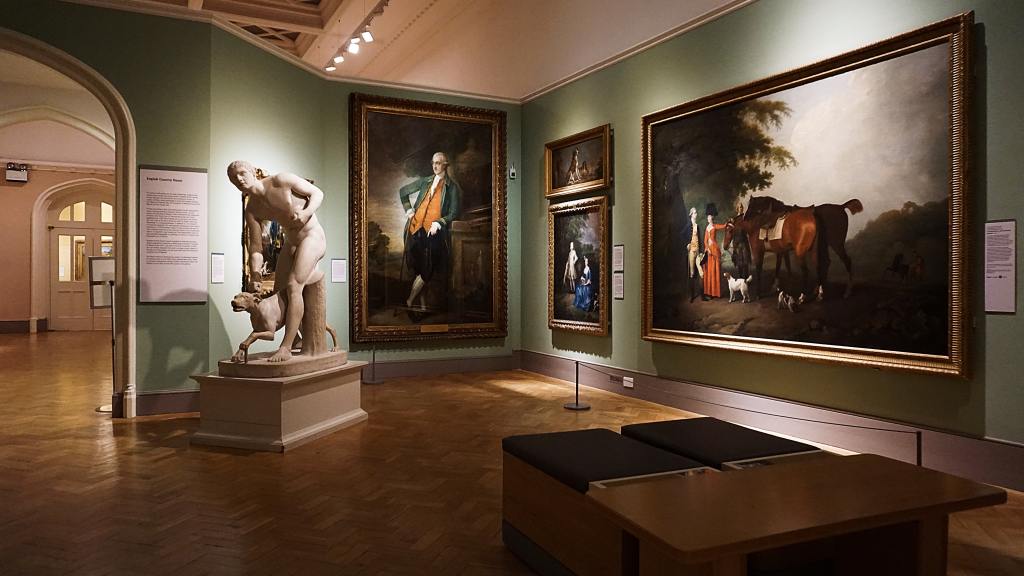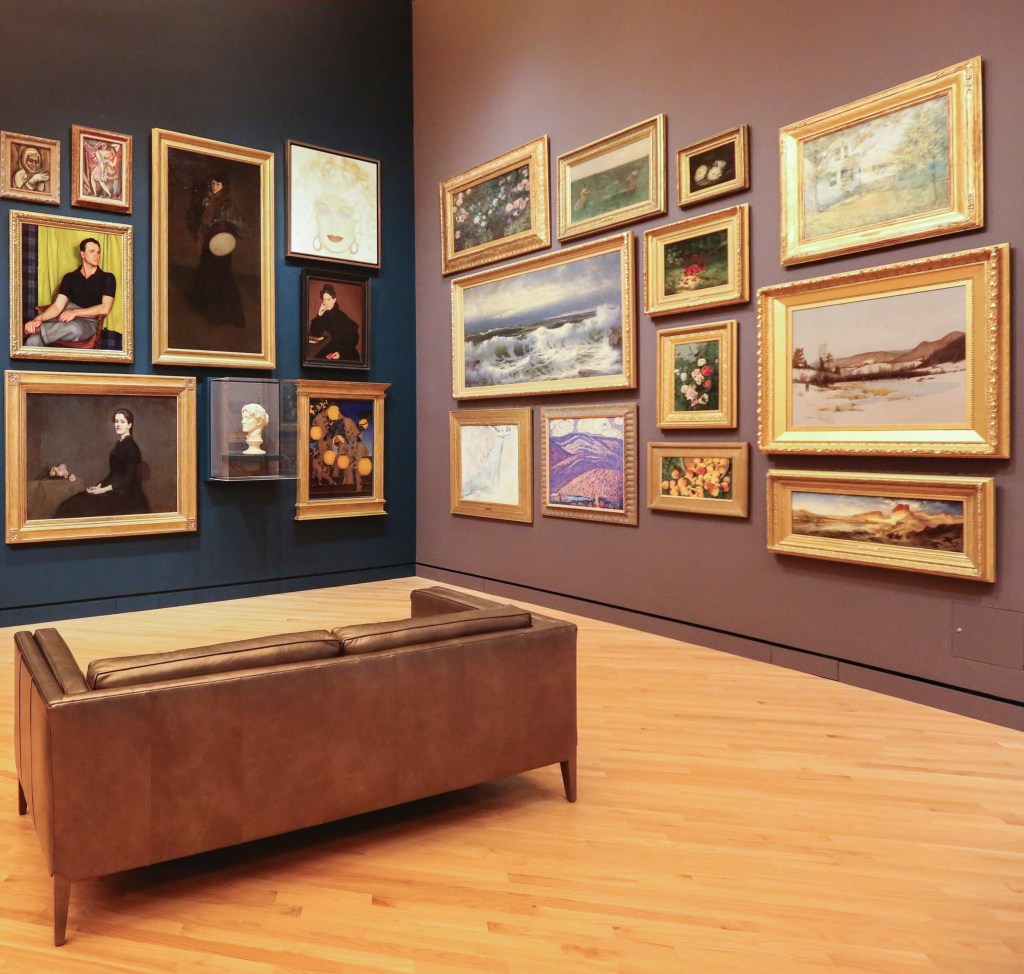
Fine Art Collections: Tips for Art Enthusiasts

Fine Art Collections: Tips for Art Enthusiasts
Unlocking the Value: Fine Art Collection Strategies
If you’re an art collector, you understand the importance of building a valuable art portfolio and growth strategies for your collection. Not only does it provide you with aesthetic pleasure, but it could also be a lucrative investment. However, increasing the value of your art collection can be daunting, especially if you are starting. In this comprehensive guide, you’ll discover practical strategies to help you enhance the value of your fine art collection. Whether you’re a seasoned collector or a beginner, you’ll find valuable insights and essential tips in this guide.

Investing in Elegance: The World of Fine Art Collection
The world of fine art collection is an elegant and fascinating realm that has captured the attention of many art collectors and enthusiasts. It is not just about owning a piece of art but also about its historical and cultural significance. Many collectors also see art as an investment, as the value can appreciate over time.
However, collecting fine art is not just about the monetary value but also about the appreciation of the art itself. The beauty and complexity of art are what draws many collectors to it. Through art collections, one can better understand art history and culture.
Art Investment
If you are contemplating investing in art, it is important to remember that there are no guarantees. The value of artwork can fluctuate depending on various factors, such as the artist’s reputation, the level of demand, and the current state of the art world. It is crucial to view art collecting as a long-term investment.
If you seek a return on investment, it is advisable to focus on mid-career or famous artists, who may be more expensive but have a proven track record of producing quality work and whose value is maintained over time. While investing in emerging artists can be tempting, it is recommended that you begin collecting art for personal enjoyment rather than purely for investment purposes. Ultimately, it is important that you appreciate the artwork, are willing to live with it, and believe in the artist’s career.

Art History’s Timeless Influence on Modern Collectors
Uncover how art history continues to shape and influence modern art collectors.
Art History Influence
Scholars have attempted to define collecting, but there is no single definition. Some authors have identified key features, such as a non-utilitarian gathering of objects, an inherent relationship between the items collected, and a subjective view of the collector. Collected items often become “sacred,” particularly true for art.
Additionally, there are various motivations behind art collecting. These motivations have evolved and can include the desire for identity, appreciation of an artwork’s aesthetic or cultural value, a sense of purpose, the need for legitimization, obsession, and even investment. Understanding these attributes and motivations allows us to understand the history of art collecting better.
Historical Context
Collecting objects has been a part of human history since ancient times. As time passed, people began to collect art for its own sake. During the Hellenistic Period, collectors commissioned works of art and copies of earlier Greek works. Furthermore, art collecting became even more popular during the Roman Empire.
During the Italian Renaissance, art collecting and commissioning allowed patrons to showcase their social status, erudition, and taste. These collectors acquired antique sculptures, commissioned artworks, and elaborate decorations from various sources, including the restoration and reproduction industry that developed in the artistic centers of Italy.
In the late 18th and early 19th centuries, art collectors donated their collections, resulting in the opening of Europe’s great museums. This led to the emergence of art museums, such as the Louvre. In the 19th century, private art collecting was popular in the US, with collectors seeking European artworks.
Many exhibitions and galleries opened up, making these artworks more accessible. Wealthy art collectors and politicians, including J.P. Morgan, amassed impressive fortunes and private collections. During the 1870s, many European art collectors entrusted their collections to museums, creating great museums such as the Metropolitan Museum of Art in New York.

Fine Art Preservation: Safeguarding Your Cultural Treasures
It is important to understand the proper techniques for preserving and protecting valuable works of art and cultural heritage. If you bought a painting directly from an artist or gallery, ask for advice on the best storage practices. If the work is older, a conservator specializing in that medium can guide restoration and maintenance.
Investing in proper framings, such as UV-protective plexiglass and acid-free paper for mounting works on paper, is also important for displaying art. Store your art in a cool, dry location, and make sure it’s properly framed and mounted. Avoid placing works in direct sunlight to prevent damage.
Additionally, it’s crucial to keep the certificate of authenticity, along with any receipts, art catalogs, or information about the artist, in a safe place. This supporting documentation can be very useful in establishing the piece’s origins and value in the future.
Navigating Art Market Trends: Tips for Aspiring Collectors
As an aspiring art collector, staying current with the latest art market trends and insights is important. You can find valuable collecting tips and advice on how to navigate the ever-changing art market. Remember, art collecting is not only for the wealthy. Anyone can become an art collector; you don’t need a big budget to start collecting art.
Fine Art Collecting Tips
There are many places to find art, such as local craft fairs, artist studio events, and even coffee shops and restaurants, acting as secondary galleries for emerging artists. The internet is also a great place to source and research the art you’re interested in. Auction houses can be an excellent place to view art as they exhibit pieces for inspection before bidding.
Figure out your “why”
Before starting your collection, figure out your “why.” Art is subjective; when you buy a piece, you make a statement that symbolically represents who you are. Think of it as a reflection of your aspirations, quirks, and how you see the world. By keeping up with art market trends and insights, you can make informed decisions and build a collection that genuinely speaks to you.
Set a budget
Once you’re ready to buy art, creating a budget that aligns with your income is crucial. This budget will help you decide what type of art to buy and from where. It is advisable to start with smaller, less expensive pieces before moving on to more valuable ones. However, just because a piece is within your budget, it’s not worth purchasing if it doesn’t inspire or align with your aesthetics. Remember, most collectors buy art for aesthetic reasons.
Sourcing Art
If you’re searching for art pieces you love, attending art fairs, exhibitions, and galleries is the best way to go. These places are great for discovering emerging artists and getting to know them. Art fairs, mainly, are excellent for finding emerging artists selling their work. If you encounter an emerging artist, don’t hesitate to ask questions and establish connections. Moreover, you’ll have the opportunity to converse with other passionate collectors and gain valuable insights.
You can also check out art online via reputable websites like The Artling. Their categorization of artworks by medium, size, theme, and color can help you narrow your search if you are looking for specific artwork.
Types of Art
Don’t be afraid of mixing materials and different types of art. Limited edition prints and photography are excellent for those on a budget. Consider investing in limited edition prints from your favorite artist since they can still hold value and may have a signature. In addition, sculptures and antique furniture can be great additions to your collection and add a unique touch.
Contemporary Art: Exploring Cultural References and Trends
The world of contemporary art is fascinating and filled with diverse styles, techniques, and cultural references. From abstract expressionism to pop art, today’s art trends span a wide range of genres and mediums.
What sets contemporary art apart is its focus on the present moment and its exploration of contemporary issues, ideas, and aesthetics. Artworks are constantly in flux, with emerging trends and artists continually pushing the boundaries of what is possible.

Fine Art Insurance Essentials: Coverage You Need to Know
If you own valuable art assets, it’s crucial to have proper insurance coverage to protect them. To begin with, it’s essential to keep detailed records of your art collection, including all sales receipts and records from any framer, restorer, or conservator services. These records play a vital role in proving the authenticity and value of your collection, especially when you need to insure it.
Art Insurance Coverage
When insuring your art collections, your homeowners policy might provide basic coverage, but it’s always worth considering a separate policy focusing on art insurance coverage. This is because the basic coverage may not be enough to cover the full value of your collection. Therefore, it’s important to keep paper records of your art pieces safe and secure so that they can be used to value and establish the authenticity of your collection when you need to insure it.
Homeowners Coverage vs Art Insurance Coverage
Standard homeowner’s insurance policies have limited coverage for personal property like fine art. Consider purchasing a separate fine art policy for better protection since standard homeowners’ policies may not handle specific needs. Fine art policies offer broader coverage, including breakage, flood, and mysterious disappearance. A fine art policy may provide coverage for transit and other locations that may not be included in a homeowner’s policy.
As a collector, it’s essential to know that blanket coverage is an option for insuring multiple artworks or collectibles under one value. However, it’s important to remember that there may still be a maximum limit per item. In the event of a loss, it may be necessary to establish descriptions and valuations for each piece covered under the blanket coverage. This process can become complicated if the loss also results in the loss of documentation for the items. Independent agents can advise on whether scheduled or blanket coverage is the best option for your collection.
Having adequate insurance coverage for your art collections is vital. You need to ensure that you purchase the right amount of insurance from a reputable and financially stable insurance company that understands fine art insurance and the different types of claims that may arise. The insurer will evaluate the risk involved by considering various factors such as your location, the security measures in place for your collection, the composition of your collection, and your past insurance claims history.
Private Art Insurance
It is worth considering private art insurance to protect your valuable collection. Homeowners’ policies may not provide sufficient coverage for high-value collections and often limit coverage for fine art. Private art insurance covers artwork owned by individuals, including paintings, sculptures, and other collectibles such as antiques and jewelry.
Coverage typically includes protection against a variety of hazards. This may consist of loss or damage to artwork due to fire, theft, water damage, vandalism, and other natural disasters. Additionally, policies may cover stolen artwork, restoration costs, and liability coverage for damage caused to third-party property or persons during the exhibition or transportation of art.
Opting for private art insurance can help you safeguard your valuable art collection and ensure you have adequate coverage in case of any unforeseen events.

Mastering the Art of Fine Art Insurance: Protecting Your Collection
If you have a valuable art collection, protecting it with the right insurance coverage is important. Fine art insurance can provide you with peace of mind, knowing that your art pieces are covered in case of damage or theft. Insuring art can be a complex process, but with the help of an experienced insurance provider, you can find the right insurance coverage for your needs.
Don’t take any chances with your art collection – invest in the proper protection and ensure that your prized possessions are safe. With the right collection protection, you can confidently enjoy your art collection.

FAQ:
Why is Fine Art Insurance Crucial for My Collection?
Fine art insurance is crucial for your collection because it protects your valuable artwork from any unforeseen risks such as theft, damage, loss, or natural disasters. Your artwork is a valuable asset, both financially and personally, and should be protected accordingly. Fine art insurance provides coverage for your collection, giving you peace of mind knowing that your investment is protected. Without insurance, you could face significant financial losses if anything were to happen to your collection.
How Do I Determine the Value of My Fine Art Pieces?
Determining the value of fine art pieces involves factors such as the artist’s reputation, condition, rarity, and market demand. Research recent sales, consult with experts, and examine the artwork’s materials and historical context.
Sources
https://theartling.com/en/artzine/ultimate-guide-starting-art-collection
https://artcollection.io/blog/history-of-collecting-art-part-one
https://design.fineartestates.com/fine-art-insurance-101/
https://www.artsy.net/article/artsy-editorial-5-tips-first-time-art-collectors
https://www.riseart.com/guide/2317/how-to-start-an-art-collection-on-a-budget
About Collectibles Insurance Services
Collectibles Insurance Services has been protecting collections since 1966 and all coverage is provided by a carrier with a group rating of “A” (Excellent) by AM Best, the leading rating agency for the insurance industry.
Comprehensive coverage includes, but is not limited to: accidental breakage, burglary, fire, flood, loss in the mail, theft, natural disasters, and other causes of loss unless specifically excluded from the policy. Deductibles start at $0 for collector policies and we provide coverage for the market value of your collection for losses in excess of $50.
Additionally the protection extends At home and away, and we don't require collection itemization and serial number nor extensive paperwork and red tape.
